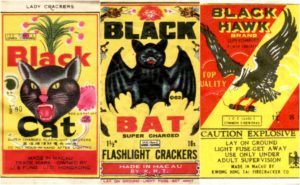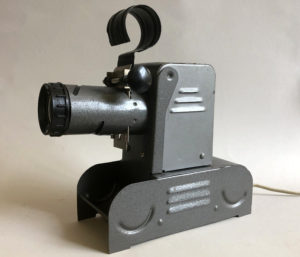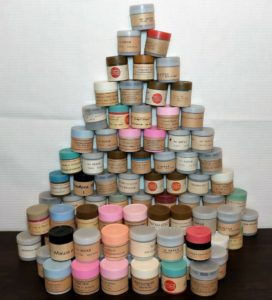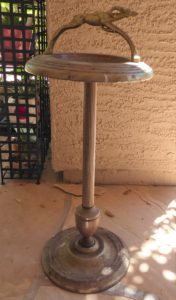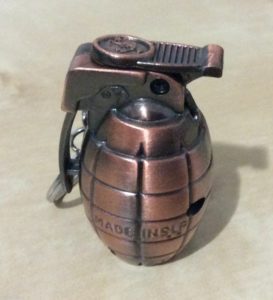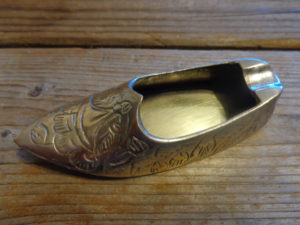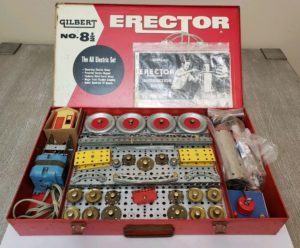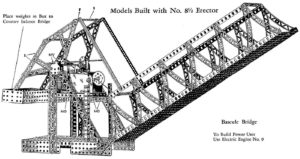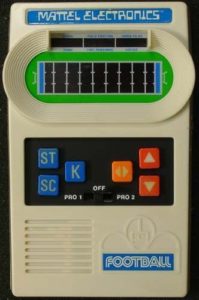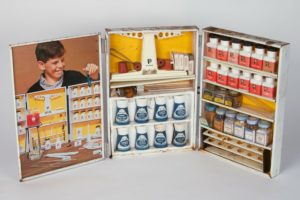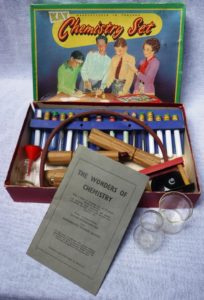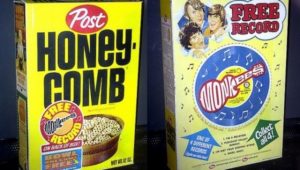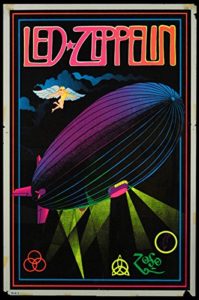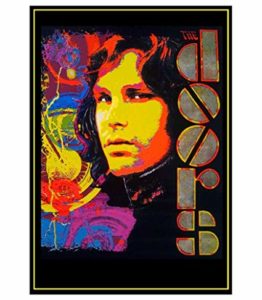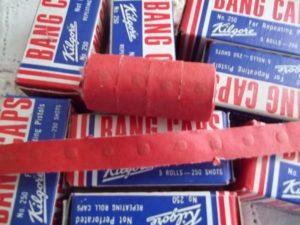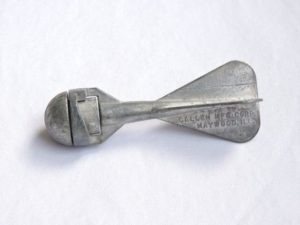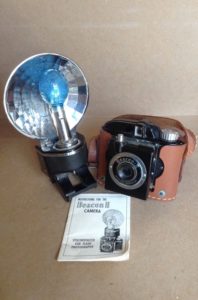
If you were to time-travel back to the mid 60’s, you would find that photography was a pretty technically challenging affair. I mean, nowadays, we shoot auto-focused, auto-exposed, auto-flashed shots with our $100 digital cameras and see the results as soon as we plug the memory chip into our computers.
But our fathers went through a more arduous experience. Open the camera, wind in the film, then, if the pictures were indoors, insert a flash bulb and instruct the camera to take a flash exposure. Then, of course, the exposed film had to be removed and sent in for processing.
It’s the flash bulbs that we’ll be concentrating on today.
Perhaps our fathers felt like they had it easy. They might have been old enough to remember when using flash involved igniting a pile of magnesium powder on a tray! But sometime in the thirties, the magnesium powder was changed to thin pieces of foil, and was contained within a glass bulb that was ignited electrically. It was truly a quantum leap in photography.
By the time we Boomers came along, the bulbs had been coated with blue plastic which provided the perfect color balance for use with outdoor color film. Thus, the same color pictures looked right whether shot inside or out. That plastic coating also kept the bulb from shattering from the sudden influx of heat, a common occurrence with earlier models. The foil had also been replaced with very thin wire strands.
By the 60’s, another leap in technology was made. Four flashbulbs were included in an ingenious device known as the flashcube. My father’s Kodak Instamatic used flashcubes, and my dad must have thought they were the greatest thing ever!
Flashcubes got even smarter. The earliest ones relied on the camera’s battery for power, but by the early 70’s, the Magicube was produced. It had primers similar to those used in ammunition which ignited the fine wires inside each bulb. Now, many cameras didn’t even need batteries!
How could things possibly get any better? Enter the Flipflash.
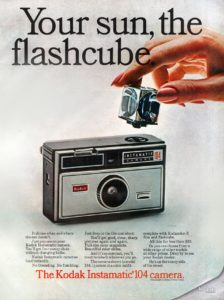
The Flipflash showed up in 1975. It had eight bulbs that would fire off consecutively. Once half of them were used, you flipped it over to use the rest.
How much better could flashbulbs get? The answer was none.
Electronic flash showed up shortly afterwards. I bought an affordable Kodak 110 in 1977 which had it. The end was in sight for the flashbulb industry.
But flashbulbs really don’t cause me to look back longingly on their former presence. Let’s face it. They were a pain. However, many a kid learned to listen to their fathers thanks to them. After ejecting a spent bulb, he would say “Don’t touch that, it’s hot!” Yet, how many of us just HAD to learn for ourselves?
A flash bulb also made a convincing space craft, flying alongside the electronic tubes I also used for the purpose.
Taking photos has gotten very easy. I just fired up my photo manager and found that I have 1,814 of them on my computer. And I really don’t consider myself an avid photographer. Historians will likely view the arrival of the cheap digital camera as a turning point in the number of photographs taken by the average Joe.
The same could certainly be said for the invention of the flash bulb.
